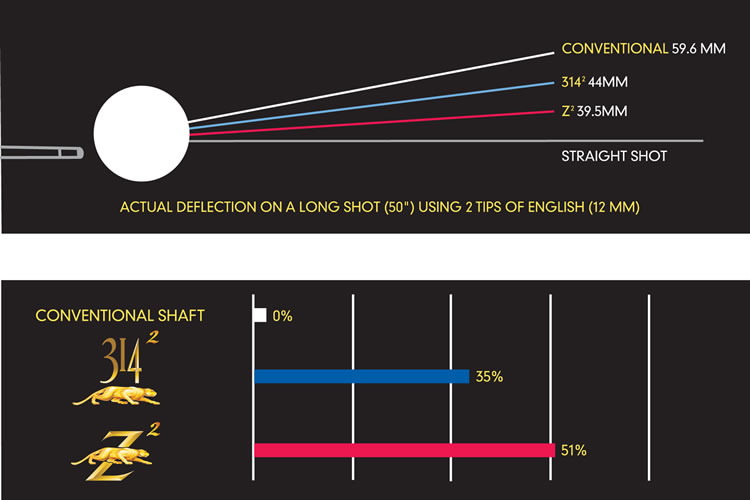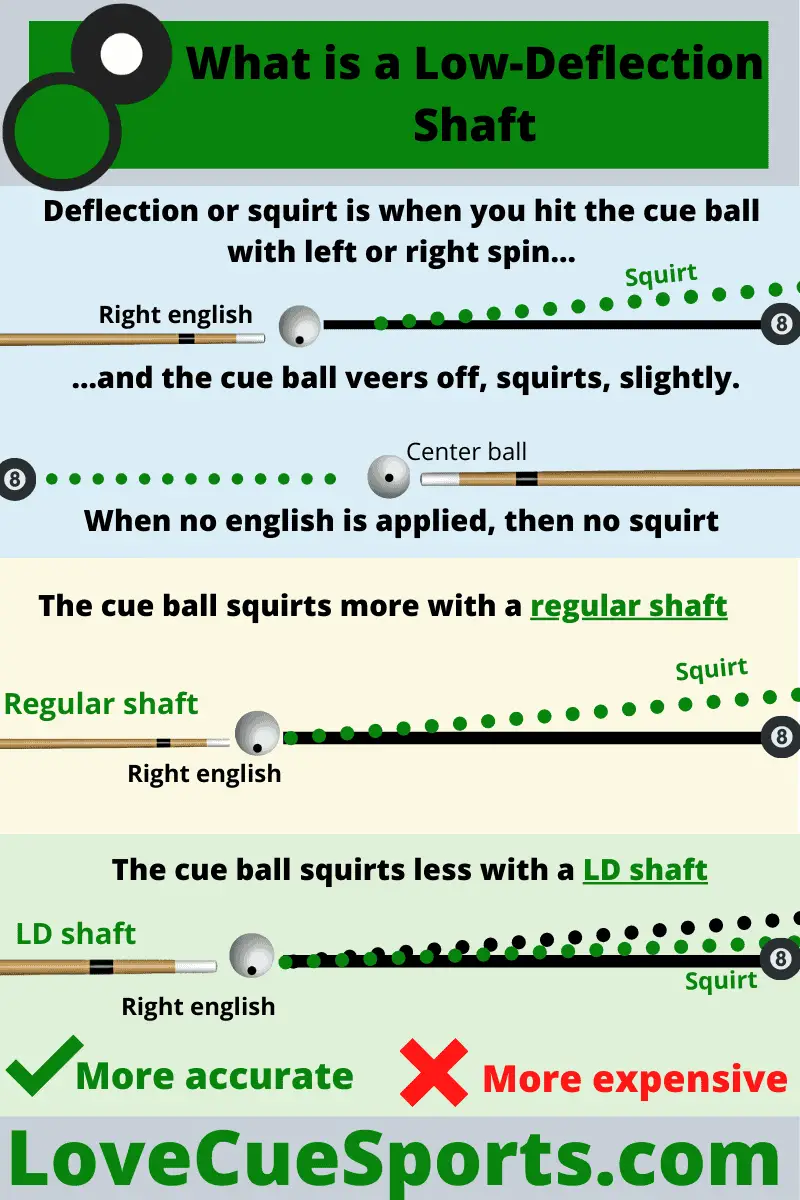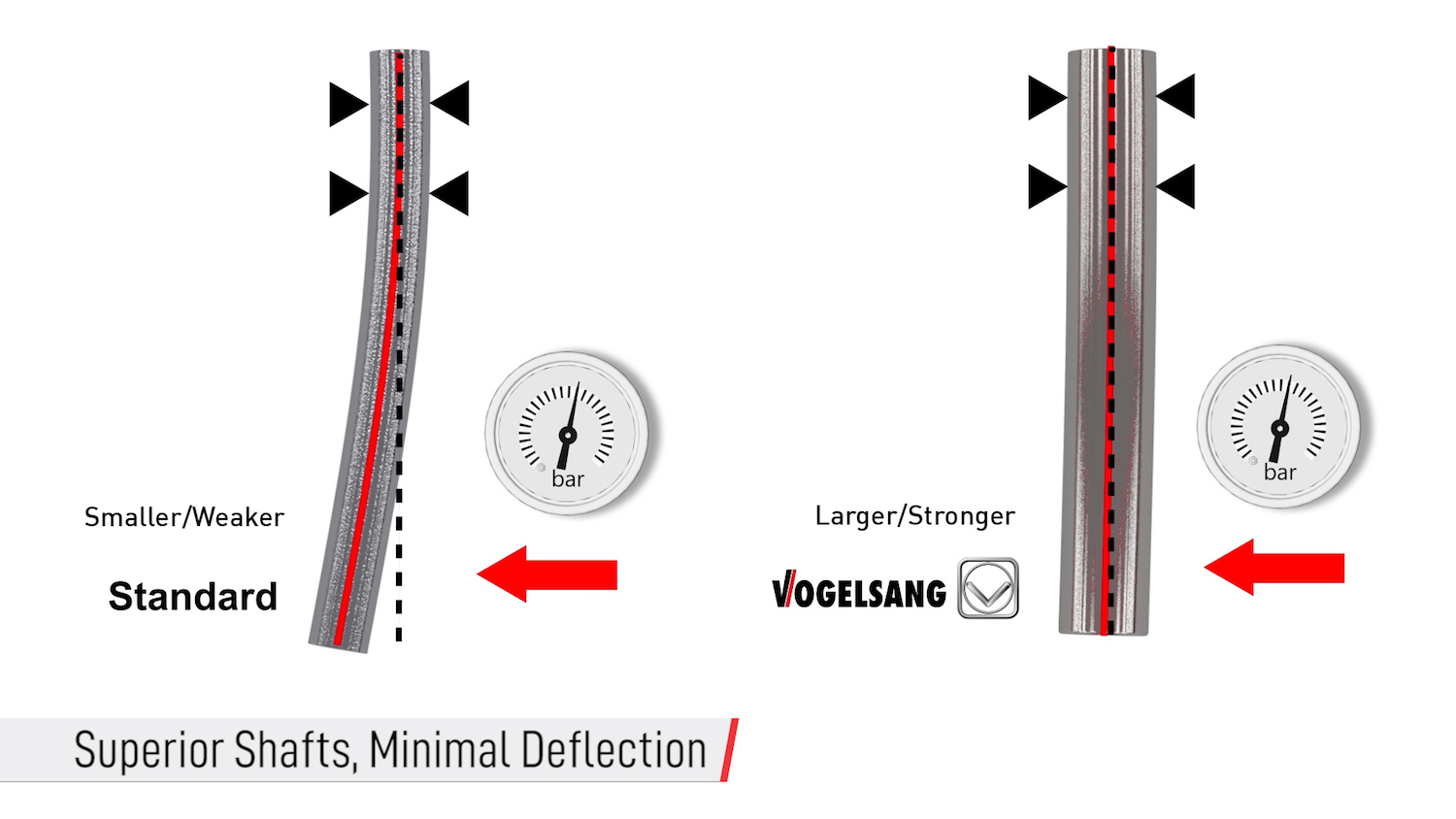Are you ready to revolutionize your pool game? Choosing the right low-deflection shaft can dramatically enhance your accuracy, control, and overall playing experience. This article delves into the world of low-deflection shafts, exploring their benefits, comparing leading brands, and helping you find the perfect fit for your unique playing style.
The evolution of pool cue technology has brought about significant advancements, with low-deflection shafts leading the charge. These shafts are designed to minimize the "squirt" effect, where the cue ball deviates from its intended path when side spin is applied. This deviation, a natural consequence of off-center hits, can be a frustrating obstacle for players of all levels. By reducing deflection, low-deflection shafts allow for more precise aiming, making it easier to pocket balls and control the cue ball's positioning.
To fully understand the impact of these shafts, let's delve deeper into the technology and explore some of the top contenders in the market. Understanding the differences between various materials and construction techniques is crucial in making an informed decision. For example, carbon fiber composite shafts are lauded for their low deflection properties, durability, and consistent performance. Jacoby, known for their dedication to quality and innovation, offers shafts that replicate the traditional feel and playability of wood shafts. These are just a few of the options available to the discerning pool player.
However, before we get ahead of ourselves, let's define what a low-deflection shaft actually is. It is a shaft that is designed to reduce the amount of cue ball deflection when you hit the ball with sidespin. Normal shafts that are made of wood, when you hit the ball with sidespin, the cue ball will deflect off its path, this is called cue ball deflection. Low deflection shafts are designed to minimize this deflection, by using different materials and construction techniques. This allows for more accuracy and control, because you can hit the ball with sidespin and the ball will not deflect as much. Now let's explore the world of low deflection shafts and find which one is best suited for your game.
Here's a simplified table of some prominent low deflection shafts, designed for easy integration into various content management systems like WordPress. This table highlights key specifications and features, designed to aid in the decision-making process:
| Shaft Brand | Material | Tip Diameter (mm) | Ferrule | Key Features |
|---|---|---|---|---|
| Predator (314 Series) | Spliced Maple/Carbon Fiber | 11.75 - 12.9 | Varies by Model | Low Deflection, Enhanced Accuracy, Variety of Joint Types. The 314 shaft, a flagship model, offers a classic feel with Predator's low-deflection technology. |
| Revo | Carbon Fiber Composite | 12.4 | Varies by Model | Extremely Low Deflection, Maximum Accuracy, Durable, Seamless Construction. The Revo shaft is engineered for optimal performance, the carbon fiber construction provides a consistent feel and exceptional durability. |
| Cuetec Cynergy 15k | Carbon Fiber Composite | 11.8 - 12.5 | Varies by Model | High Performance, Low Deflection, Superior Energy Transfer, Consistent Feel, Variety of Joint Types. Known for their accuracy and the use of state-of-the-art materials, their shafts help players gain a competitive edge. |
| OB1 | Laminated Wood/Carbon Fiber | 11.75 - 12.75 | Varies by Model | Low Deflection, Enhanced Accuracy, Vibration Dampening, Comfortable Hit. OB shafts combine a wood core with advanced construction to minimize deflection while maintaining a familiar feel. |
| JFlowers | Carbon Fiber Composite | 11.8 - 12.5 | Varies by Model | Low Deflection, Accurate, Durable, Designed for performance and long-term durability. The JFlowers shaft are designed to raise a players game and are crafted to provide exceptional performance and a responsive feel. |
| PureX HXT | Laminated Wood | 12.75 | Varies by Model | Low Deflection Technology, Reduced cue ball deflection, Designed to provide a solid hit, provides control. The HXT shaft is designed to deliver a solid hit, with good feedback, and a reduction in cue ball deflection. |
In the realm of pool cues, the choice of the right shaft can significantly influence your game. Selecting the right shaft is often a complex equation. It's for this reason that carbon fiber composite Revo, spliced Vantage, 314, and Z offer distinct advantages and compromises to suit your unique stroke and playing style. Some players find the feel of wood shafts familiar and comfortable, while others are drawn to the precision and consistency offered by carbon fiber. The diverse range of options in the market ensures that every player can find a shaft that suits their individual preferences and playing style. For those who prefer a more traditional feel, Jacoby shafts replicate the feel of wood, while still offering the benefits of modern technology.
The Predator brand has long been synonymous with innovation in low-deflection shaft technology, pioneering many of the techniques used today. Since the launch of its original 314 shaft in 1994, Predator has been known to innovate and produce the best low-deflection shafts. The new 314 shafts by Predator, with even further reduced deflection over the 2nd generation shafts, are forces of nature unto themselves! The 314 series shafts, with their spliced maple construction and advanced engineering, provide a familiar feel while minimizing deflection. They offer exceptional accuracy and control, allowing players to execute their shots with precision. These shafts are known for their ability to help players progress in their game. Predator has been dominating the market, with high sales and a reputation for quality.
Carbon fiber shafts, such as the Revo, are constructed from aerospace-grade carbon fiber composite. This material offers several advantages, including extreme durability and consistent performance. These shafts are engineered for minimal deflection, maximizing accuracy at both high and low speeds. Furthermore, carbon fiber shafts are less susceptible to warping or damage from environmental factors, making them a long-lasting investment for any serious player. These shafts arguably offer better performance than wooden shafts, however, it depends on the player.
The low deflection quality will also help one progress fast. The fact that its a low-deflection shaft, its bound to last longer than the standard shafts. Low deflection shafts are not just a technological advantage; they can also contribute to the longevity of the game. With the ability to last longer, these shafts provide a long-term benefit, reducing the need for frequent replacements.
For those who have tried various shafts, the question of how they compare in terms of deflection and feel often arises. The feedback varies. Some ex pros feel like the shafts have lower deflection than other brands. The difference in deflection at higher speed vs lower speed, when comparing wood to carbon fiber, is also a factor to consider. The best way to determine the right shaft is through personal experience and testing. Many players find that the Revo provides a distinctive advantage in this area, due to its carbon fiber construction. The CueTec Cynergy 15k is another shaft that provides great performance for its value.
When exploring different shafts, its important to consider the tip diameter and ferrule length as key specifications. A comparison chart of low-deflection shafts by specifications (tip diameter, ferrule length, etc.) can be a valuable resource for making informed decisions. The tip diameter affects the feel and the level of control, while the ferrule plays a critical role in the shafts overall performance. Some players will feel that using a shaft that is outside of their comfort zone will hinder their play.
Moreover, with a low-deflection shaft, you might find yourself fighting against your natural way of looking at shots with spin. It's crucial to adapt your technique to maximize the benefits of the new shaft. Some players may struggle with adjusting to the lower deflection initially. Players may have to adjust to a new pivot point when hitting the ball with spin. The aim is to be able to find one that matches the desired pivot point.
Furthermore, the HXT shaft is designed to reduce cue ball deflection, providing more control, and accuracy. The JFlowers Classic Carbon Fiber Shaft and the jflowers s.m.o. are designed to elevate your game and provide an enhanced playing experience. Pooldawg also carries high-performance shafts that increase accuracy and reduce cue ball deflection, giving you the competitive edge to take down your opponent. This is the ultimate low-deflection shaft made of aero space grade carbon fiber composite, offering the most accurate shaft at high/low speeds and the greatest durability. Whether choosing between Predators low-deflection technologies or the third generation of Predators world-renowned spliced maple shafts, prepare to have your game changed forever.
Choosing the right shaft is a matter of personal preference and playing style. The Smart shaft and the OB1 shafts are great to compare. Ultimately, it is about finding a shaft that compliments your technique. Many players find that the Revo provides a distinctive advantage in this area, due to its carbon fiber construction. The CueTec Cynergy 15k is another shaft that provides great performance for its value.



Detail Author:
- Name : Mr. Alexandro Anderson MD
- Email : xkling@swift.com
- Birthdate : 2002-08-17
- Address : 32516 Fay Shores Sybleport, WY 49005
- Phone : +1-872-358-6066
- Company : Tremblay, Kutch and Willms
- Job : Farmworker
- Bio : Doloribus molestias ea enim est saepe voluptas rerum. Consequatur amet aut recusandae excepturi. Rerum voluptate minima itaque nulla doloremque. Sapiente quod sit debitis aperiam.